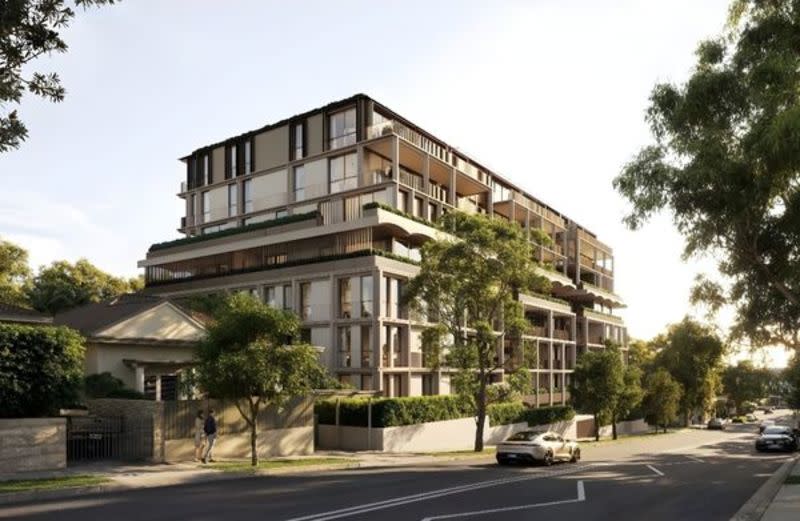Fortis Advances $86m Rose Bay Play as LMR Uptake Grows

Fortis has moved quickly in Sydney’s Rose Bay, pushing its $75-million five-home purchase into the planning system with an $86.6-million midrise now on exhibition.
The Sydney-headquartered developer acquired 23-31 Dover Road in March, just weeks after the state’s Low and Mid Rise (LMR) reforms took effect in late February.
Its proposal—on exhibition until December 1—uses the in-fill affordable housing pathway under the reforms, opening the door to a taller building and more homes on the block.
Fortis NSW acquisitions and developments general manager John Yacoub told The Urban Developer the policy shift removed uncertainty from day one.
“The LMR reforms provided immediate clarity, so we could move straight into feasibility and design,” he said.
“Our long-term partners at MHNDU and our consultant team mobilised quickly, and our experience delivering mid-rise projects in the east meant we had tested frameworks ready to adapt.
“With an experienced in-house team, decisions were made efficiently and the proposal progressed at pace.”
The 2657sq m site sits east of the Rose Bay centre and spans five lots, including a former medical clinic and a run of single and two-storey houses.
Public records show 23 Dover Road sold for $16 million after attracting no offers at $8 million before the reforms. It was part of Fortis’s $75-million acquisition of the row.
Plans by MHNDU outlined an eight-storey building with 48 apartments, including 11 affordable homes, above two basement levels, with two, three and four-bedroom layouts, stepped massing and larger east-facing terraces.
A traffic report recommended 67 car spaces within the basements, with all vehicle manoeuvring kept internal.

Flood and stormwater constraints would also shape the layout, pushing drainage infrastructure, service areas and protective barriers into the lower levels.
A hydraulic study confirmed the basements would require added flood protection, with upgraded roof drainage and water-management systems to meet the Woollahra City Council’s controls.
Pre-lodgement engagement recorded concerns around height, excavation depth and overshadowing. Residents also cited traffic, parking pressure and character change.
Similar themes surfaced at 2-16 Spencer Street, where residents responding to HSN Property’s 54-apartment proposal pointed to parking strain, structural risks tied to deeper basements and the cumulative impact of midrise housing in the area.

Yacoub said the LMR framework had become easier to navigate since rollout.
“There’s much greater clarity now,” he said. “The legislation and mechanisms are well understood, making the pathway more predictable and transparent.
“The community also better recognises that developers are responding to state planning controls, not creating them, which has made the process more structured and collaborative.”
The Dover Road design steps down to adjoining homes through varied setbacks, planted breaks and a tiered profile.
Dover Road has become one of the first pockets at Rose Bay shifting under the new controls.
Private aged-care and seniors living group Pathways Residences has reportedly assembled a $150-million landholding across 33-37 Dover Road and 20-30 Wilberforce Avenue for a future aged-care project.
A separate consolidation nearby—the 12-home Wilberforce and Dover “supersite” spanning 32-38 Wilberforce Avenue and 41-55 Dover Road—was listed in June for about $165 million, signalling how quickly the LMR uplift has reshaped values in the suburb.

Fortis’s Rose Bay work now includes 10-12 Ian Street, Atlas at 5 Spencer Street, The Benson at 33 Newcastle Street and No.1 Carlisle at 1 Carlisle Street.
Its Ian Street scheme scaled up from a three-storey, 12-apartment approval to six storeys and 22 apartments under the LMR uplift, while the completed Atlas, Benson and Carlisle projects have already added boutique stock through the suburb.
Yacoub said Dover Road was a natural progression.
“Dover Road is a natural addition to our eastern-suburbs pipeline… It responds to strong demand for premium midrise living in Rose Bay, leverages an exceptional location, and aligns with the new planning settings to deliver a high-quality, context-sensitive outcome.”
The Dover Road site is within walking distance of shops, schools and bus routes along Dover and Old South Head roads, meeting the Housing State Environmental Planning Policy (Housing SEPP) transport and proximity triggers.
The Woollahra Council remains opposed to the LMR reforms, arguing they override local controls and strain infrastructure.













